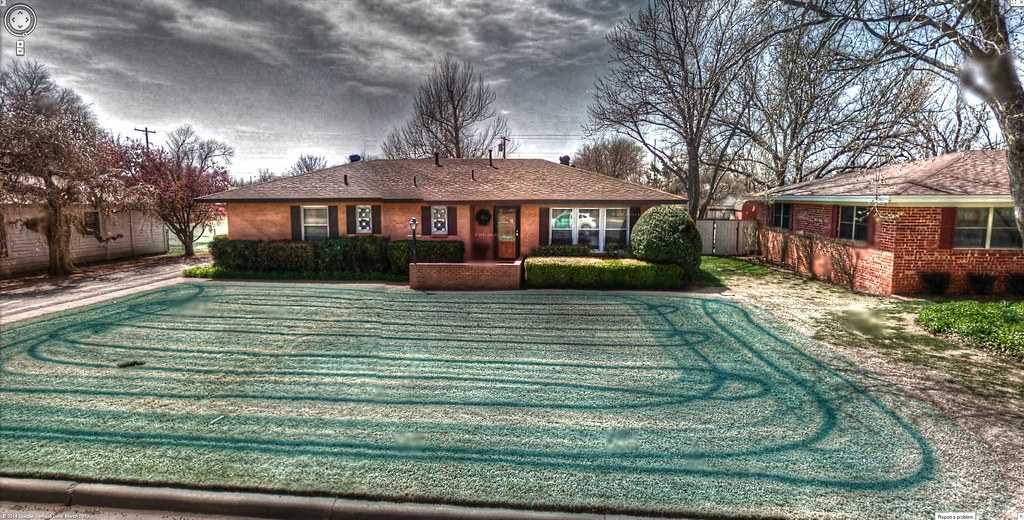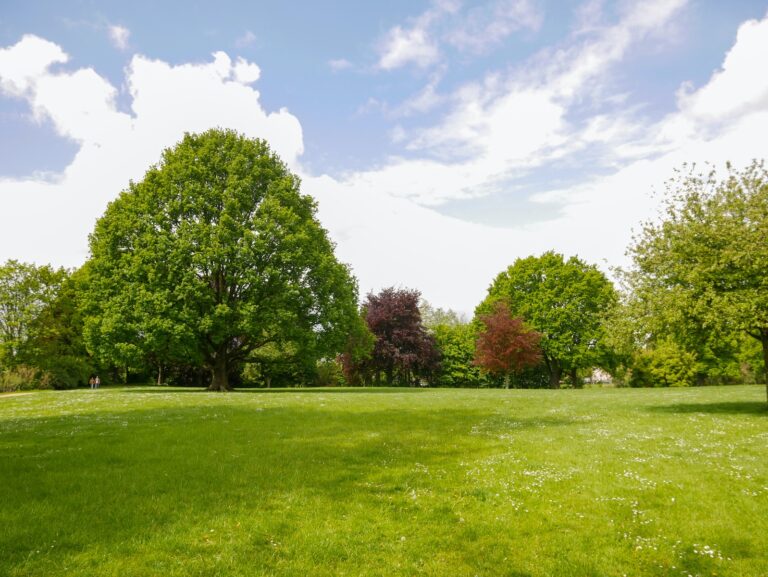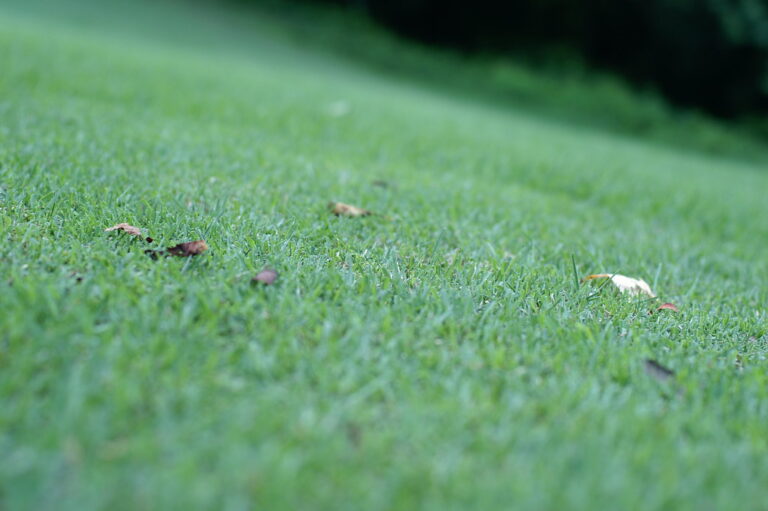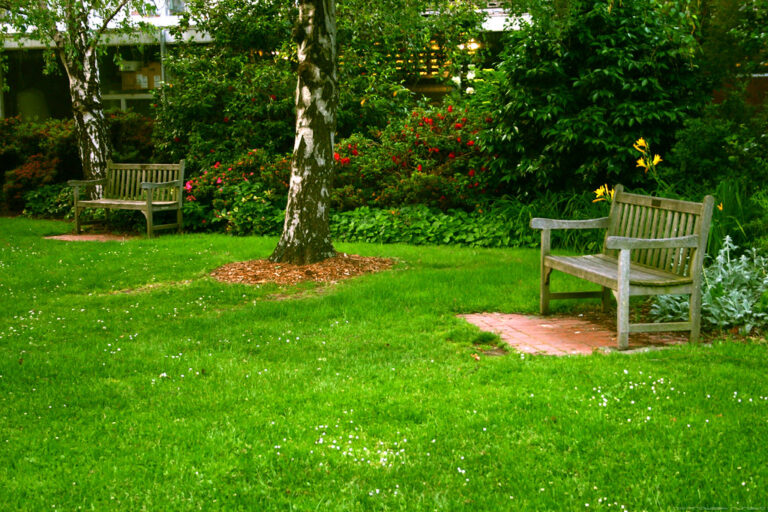Low-Maintenance Lawn Design: Balancing Aesthetics and Effort

Are you tired of spending countless hours caring for your lawn, only to have it still look lackluster? It’s time to break free from the high-maintenance cycle and embrace a low-maintenance lawn design that balances aesthetics and effort. In this blog post, we’ll explore practical tips and strategies to help you create a beautiful, hassle-free yard that will be the envy of the neighborhood. Say goodbye to endless mowing sessions and hello to more time spent enjoying your outdoor space! So let’s dive in and discover how you can achieve the perfect blend of beauty and ease with your very own low-maintenance lawn design.
Designing a low-maintenance lawn
Creating a low-maintenance lawn doesn’t mean sacrificing aesthetics. With the right design, you can have a beautiful outdoor space that requires minimal effort to maintain. So how do you achieve this balance?
First, consider the layout of your lawn. Opt for clean lines and simple shapes that are easy to mow and trim. Avoid intricate patterns or overly complicated designs that will require frequent upkeep.
Next, choose plants and landscaping elements that are hardy and able to withstand various weather conditions. Native plants often thrive with little intervention, requiring less water and fertilizer than exotic species.
Incorporate mulch or groundcovers in areas where grass may struggle to grow, such as under trees or along steep slopes. This not only reduces mowing time but also helps prevent erosion.
To reduce watering needs, group plants with similar moisture requirements together and install an efficient irrigation system with adjustable zones.
Consider using artificial turf in high-traffic areas or shady spots where grass struggles to grow. It provides a lush appearance without the need for constant maintenance.
By designing your low-maintenance lawn with these considerations in mind, you can enjoy a beautiful outdoor space while minimizing the effort required for upkeep!
Selecting the right grass species
Selecting the right grass species for your low-maintenance lawn is key to achieving a lush and beautiful yard with minimal effort. With so many options available, it’s important to consider factors such as climate, soil type, and foot traffic when making your decision.
One popular choice for low-maintenance lawns is Bermuda grass. This warm-season grass thrives in hot climates and requires little water once established. Its rapid growth also helps to crowd out weeds, reducing the need for herbicides.
If you live in a cooler region, Kentucky bluegrass may be a better option. This cool-season grass has excellent wear tolerance and can withstand heavy foot traffic without becoming sparse or worn-looking.
For those seeking a more drought-tolerant option, consider Zoysia grass. This heat-resistant variety requires less water than most other types of turfgrass and maintains its dense growth pattern even under stress.
Another factor to consider is the amount of shade your lawn receives. If you have trees or buildings that cast shadows over your yard, choose a shade-tolerant species like St. Augustine or Fine Fescue.
By carefully selecting the right grass species for your specific conditions, you can enjoy a low-maintenance lawn that stays green year-round with minimal effort on your part
Mowing and watering your lawn
Mowing and watering your lawn are two essential tasks to maintain its health and appearance. Let’s dive into some tips on how to do it effectively!
When it comes to mowing, the key is to find the right balance. Aim to keep your grass at a height of around 2-3 inches. Cutting it too short can stress the plants and make them more susceptible to diseases and weeds. On the other hand, letting it grow too long can create an unkempt look.
Regular mowing is important during active growth periods, usually in spring and summer. However, avoid cutting more than one-third of the grass blade length at once as this may shock the plant. Also, remember to sharpen your mower blades regularly for clean cuts that promote healthy growth.
Now let’s talk about watering! The frequency and amount of water needed depend on factors like climate, soil type, and grass species. Water deeply but infrequently rather than shallowly but frequently. This encourages deeper root growth and makes your lawn more drought-tolerant.
To determine when it’s time to water, keep an eye on your grass’ color – if it starts looking dull or doesn’t bounce back after foot traffic, it might be getting thirsty! Water early in the morning or late afternoon when evaporation rates are lower.
Remember that overwatering can lead to shallow roots and increased weed growth while underwatering can cause dry patches and poor overall health.
By following these guidelines for mowing and watering your lawn properly, you’ll ensure that it stays lush and beautiful with minimal effort required from you! So go ahead – grab that lawnmower handle or turn on those sprinklers – your low-maintenance lawn will thank you for it!
Fertilizing and weed control
Fertilizing and weed control are essential aspects of maintaining a low-maintenance lawn that still looks lush and beautiful. When it comes to fertilizing, it’s important to choose the right type of fertilizer for your specific grass species. Different types of grass have different nutrient requirements, so be sure to do your research or consult with a professional.
To keep weeds at bay without putting in excessive effort, consider using pre-emergent herbicides. These products prevent weed seeds from germinating, effectively reducing the number of weeds that will appear in your lawn. However, it’s important to follow the instructions carefully and apply these herbicides at the appropriate time for maximum effectiveness.
For existing weeds, spot treatment is often more efficient than trying to treat the entire lawn. Use a selective herbicide that targets specific types of weeds while minimizing harm to desirable plants. Be vigilant about removing any weeds as soon as they appear to prevent them from spreading and taking over your lawn.
Regular maintenance practices such as proper mowing height and watering schedule can also help minimize weed growth by promoting healthy grass growth. Additionally, ensuring good soil health through proper drainage and regular aeration can help create an environment less conducive for weed development.
By staying on top of fertilizing and implementing effective weed control strategies, you can maintain a low-maintenance lawn that requires minimal effort while still looking pristine all year round!
Dealing with pests
Dealing with pests can be a challenge when it comes to maintaining a low-maintenance lawn. However, there are several strategies you can employ to keep these unwanted intruders at bay and ensure your lawn remains healthy and beautiful.
One effective method is to promote natural pest control by encouraging beneficial insects, such as ladybugs and lacewings, which feed on harmful pests like aphids and caterpillars. You can attract these helpful bugs by planting native flowers or herbs that provide nectar and pollen.
Another option is using organic pest control products that are safe for both your lawn and the environment. These products contain natural ingredients like neem oil or garlic extract that repel pests without harming beneficial insects or pollinators.
Regularly monitoring your lawn for signs of infestation is crucial in preventing pest damage from escalating. Look out for chewed leaves, discolored patches, or visible insects. If you spot any potential issues early on, take action immediately to prevent further damage.
Implementing proper cultural practices also plays a significant role in keeping pests under control. Ensure your lawn receives enough sunlight and air circulation by trimming overhanging branches or removing dense vegetation around the perimeter.
By taking an integrated approach to manage pests in your low-maintenance lawn, you can strike a balance between aesthetics and effort while enjoying a vibrant outdoor space all year round!
Conclusion
Creating a low-maintenance lawn that strikes the perfect balance between aesthetics and effort is no small task. However, with careful planning and the right approach, you can achieve a beautiful and hassle-free outdoor space.
Remember to start by designing your lawn with simplicity in mind. Opt for clean lines, minimalistic features, and functional spaces that require less upkeep. Choose grass species that are well-suited to your climate and soil conditions, ensuring they have natural resistance to common diseases and pests.




